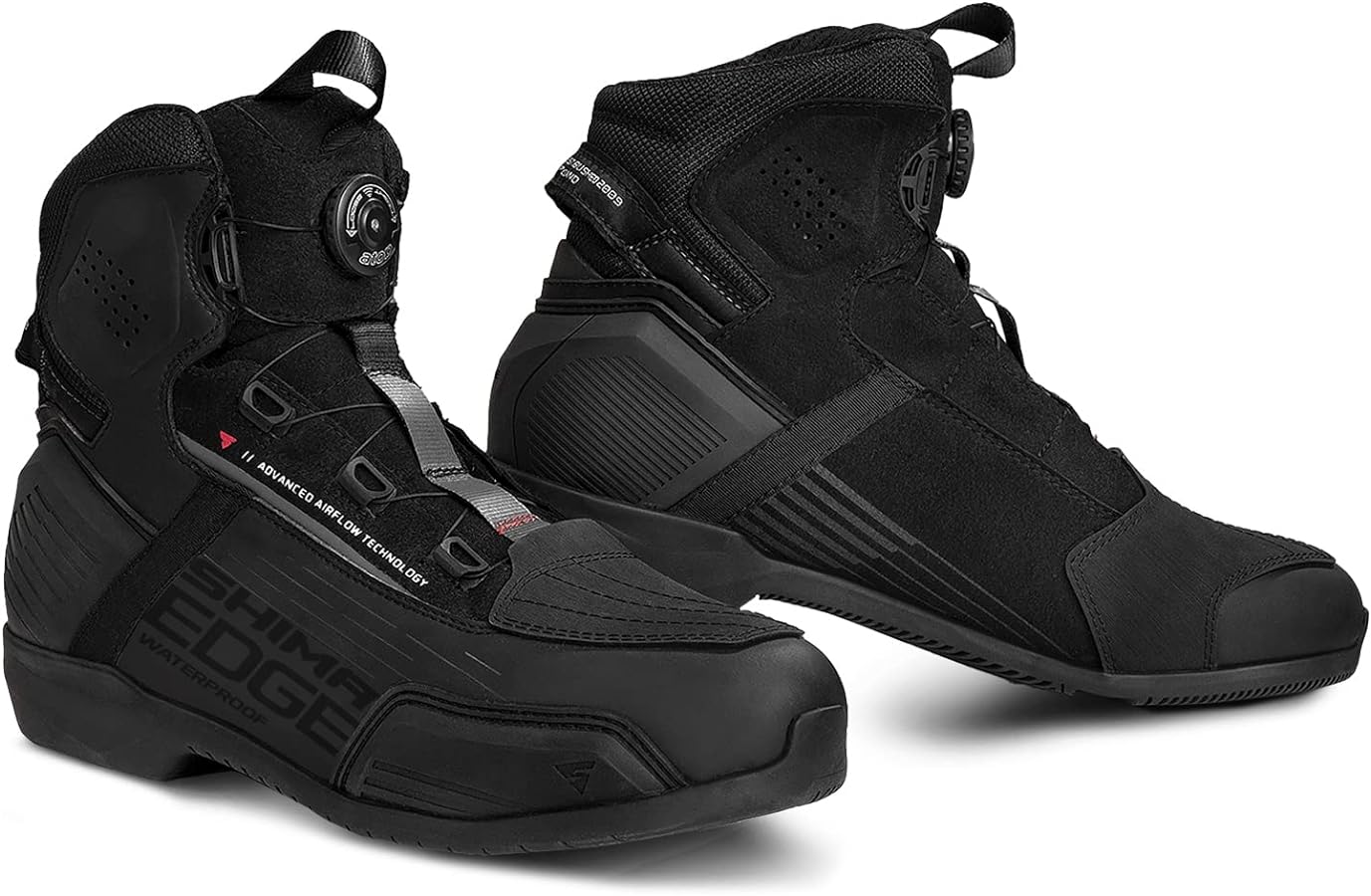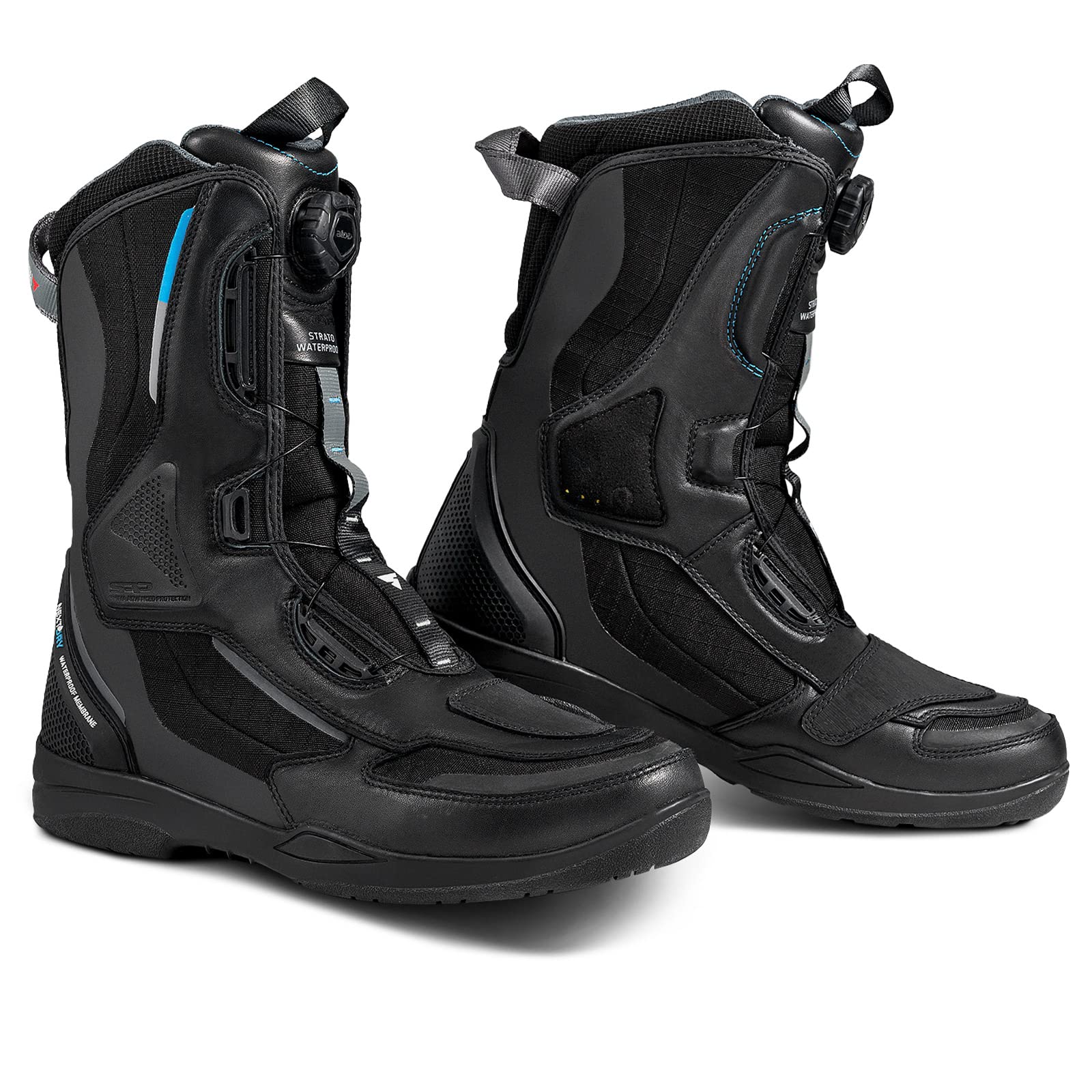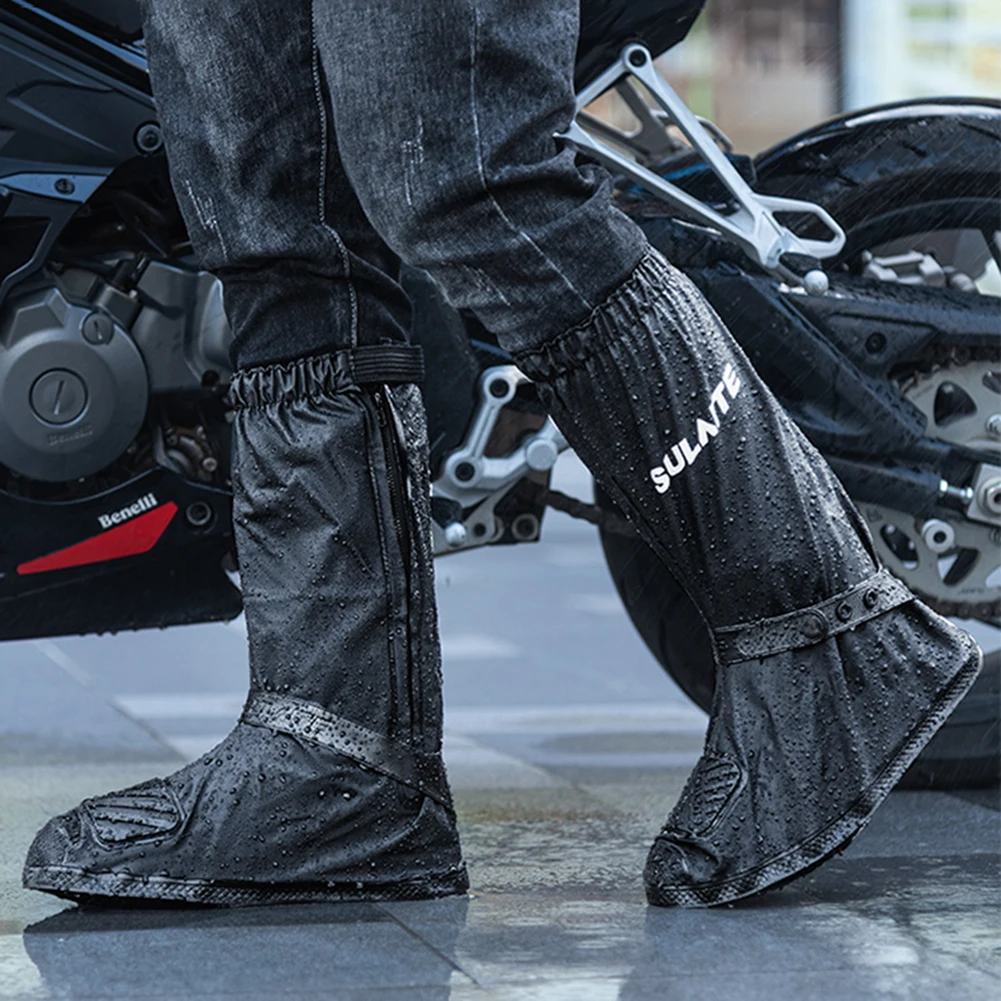Introduction
Motorcycle boots are an essential component of a rider’s gear, providing protection and support during rides. However, keeping your feet dry and comfortable in wet weather conditions can often be challenging. Fortunately, there are several effective methods to waterproof motorcycle boots, ensuring optimal performance and protection in any weather. In this guide, we will explore various techniques to waterproof your boots, from using waterproofing products to applying DIY sealants, keeping your feet dry and comfortable on your rides.

How to waterproof motorcycle boots?
I. Understanding Waterproofing Products
-
Waterproofing Sprays:
- Waterproofing sprays are specially formulated products designed to create a barrier on the surface of materials, making them resistant to water penetration. These sprays are the most widely used and convenient method for waterproofing motorcycle boots.
-
Wax-Based Waterproofing Products:
- Wax-based waterproofing products, such as beeswax or paraffin wax, offer an alternative to sprays. These products are applied directly to the boot’s surface and create a waterproof barrier by coating the leather and sealing any potential entry points for water.
-
Silicone-Based Waterproofing Products:
- Silicone-based waterproofing products are effective for sealing seams, stitching, or other areas that are more prone to water ingress. They contain silicone, which forms a protective layer over vulnerable parts of the boots, preventing water from seeping in.

II. Preparing Your Boots for Waterproofing
-
Clean the Boots:
- Before applying any waterproofing treatment, ensure that your boots are clean and free from dirt, dust, or oils. Use a soft brush or cloth to remove any debris from the surface of the boots.
-
Drying the Boots:
- It is crucial to completely dry your boots before waterproofing them. If your boots are wet, allow them to air dry naturally in a well-ventilated area. Do not use direct heat sources, such as heaters or hairdryers, as these can damage the leather or materials.
III. Using Waterproofing Sprays
-
Read the Instructions:
- Always read and follow the instructions provided by the manufacturer of the waterproofing spray. Different sprays may have specific application techniques or requirements for optimal results.
-
Test in an Inconspicuous Area:
- Prior to applying the waterproofing spray, conduct a patch test in an inconspicuous area of the boot. This will ensure that the spray does not discolor or damage the material.
-
Apply Evenly:
- Hold the spray can approximately 6-8 inches away from the boot’s surface. Using sweeping motions, apply the spray evenly, making sure to cover the entire surface of the boot. Pay extra attention to areas that are more susceptible to water exposure, such as stitching or seams.
-
Allow for Drying Time:
- After applying the waterproofing spray, allow the boots to dry completely according to the manufacturer’s instructions. This typically involves leaving the boots in a well-ventilated area for a specified period of time.
-
Reapply as Needed:
- Depending on the specific spray and the frequency of use, it may be necessary to reapply the waterproofing spray periodically. Follow the manufacturer’s guidelines for reapplication intervals to ensure optimum protection.

IV. Wax-Based Waterproofing Methods
-
Choose the Right Wax:
- Select a suitable wax product for your boots, such as beeswax or paraffin wax. Ensure that the wax does not contain any harsh chemicals that may damage the leather or other materials.
-
Preparation:
- Before applying the wax, clean the boots thoroughly and allow them to dry completely. Warm the wax slightly to soften it for easier application.
-
Apply the Wax:
- Using a clean, soft cloth or sponge, apply the wax to the surface of the boot, making sure to cover the entire area. Focus on seams, stitching, and any other areas that may be prone to water ingress.
-
Heat and Buff:
- After applying the wax, use a hairdryer or heat gun on low heat to melt the wax into the leather or fabric. While the wax is still warm, buff the boots gently with a soft cloth to ensure an even distribution of the wax and to remove any excess.
-
Allow for Curing:
- Allow the boots to cure overnight or for the duration suggested by the wax manufacturer. This will allow the wax to fully bond with the material, providing an effective waterproof barrier.

V. Silicone-Based Waterproofing Methods
-
Identify Vulnerable Areas:
- Inspect your boots and identify areas that may require additional protection. This could include seams, zippers, or areas where the boots are joined together.
-
Apply the Silicone-Based Waterproofing Product:
- Using a small brush or applicator, apply the silicone-based waterproofing product to the vulnerable areas of the boots. Ensure that the product covers the seams and any stitching, creating a protective barrier against water.
-
Smooth and Spread:
- After applying the silicone-based product, use a clean brush or cloth to smooth and spread the product evenly over the vulnerable areas. This will help ensure thorough coverage and optimal waterproofing.
-
Allow for Drying and Curing:
- Give the boots sufficient time to dry and cure after applying the silicone-based waterproofing product. Follow the manufacturer’s instructions for the recommended drying time to ensure proper bonding and effectiveness.
VI. Additional Tips
-
Regular Maintenance:
- Regularly inspect and clean your boots to maintain their waterproofing effectiveness. Remove any dirt or debris that may compromise the water-resistant properties of the boots.
-
Reapply as Needed:
- Depending on the frequency and intensity of use, it may be necessary to reapply the waterproofing treatment periodically. Pay attention to signs of decreased waterproofing performance, such as water seeping through the boots or a dulling of the water-resistant properties.
-
Seek Professional Assistance:
- If you are unsure about the best method or product for waterproofing your boots, consult a professional shoe or boot repair specialist. They can provide guidance on the most suitable techniques and products for your specific boots.

VII. Conclusion: Dry and Comfortable Rides with Waterproof Boots
Waterproofing your motorcycle boots is essential for maintaining comfort and protection during wet weather conditions. With the proper techniques and products, you can effectively enhance the water-resistant properties of your boots, keeping your feet dry and ensuring optimal performance while riding.
Whether you choose to use waterproofing sprays, wax-based products, or silicone-based treatments, the key is to prepare your boots properly, apply the waterproofing product evenly, and allow for sufficient drying and curing time. Regular maintenance and reapplication, as needed, will help preserve the waterproofing properties of the boots over time.
By taking the necessary steps to waterproof your motorcycle boots, you can enjoy dry and comfortable rides, even when facing challenging weather conditions.
